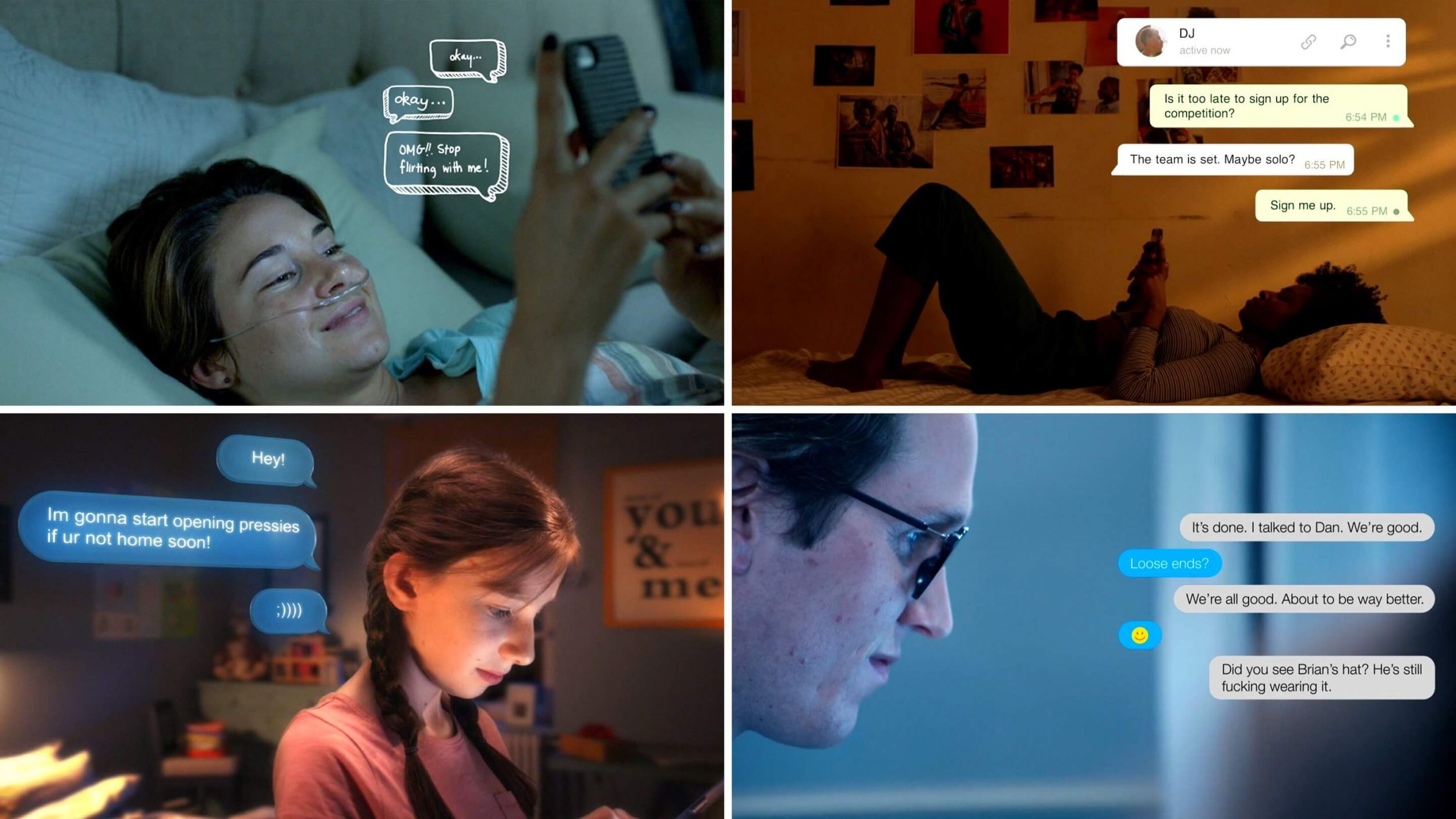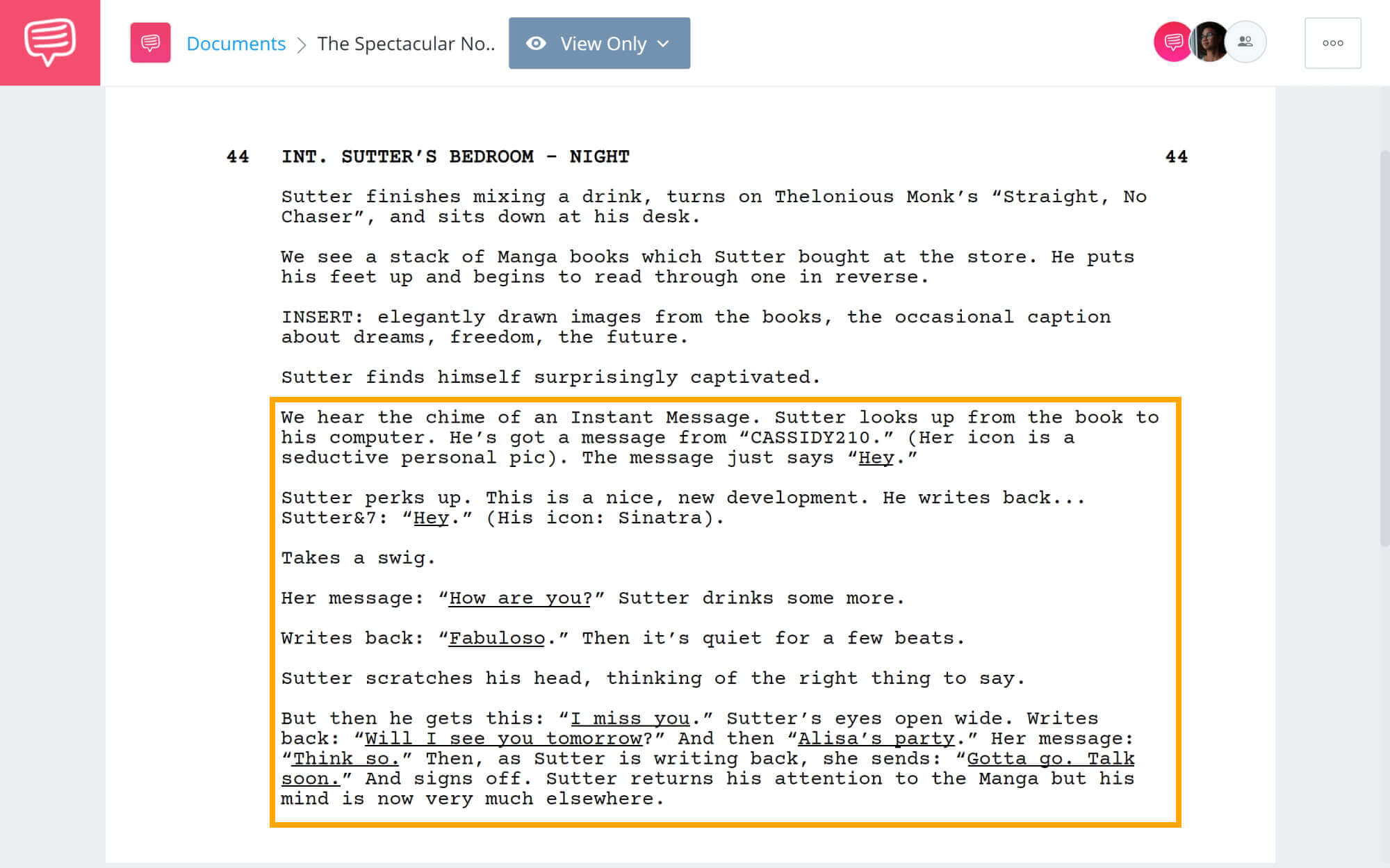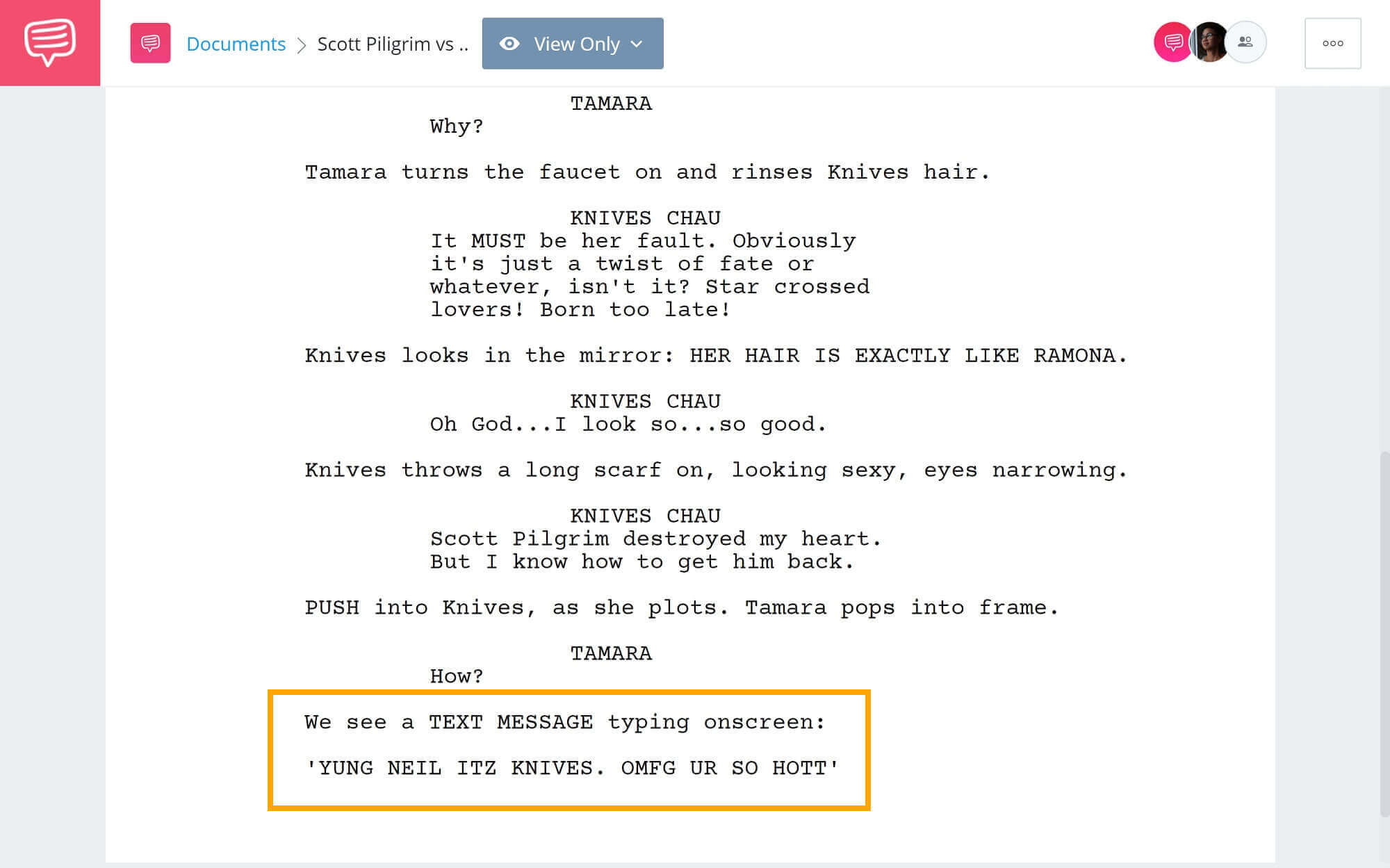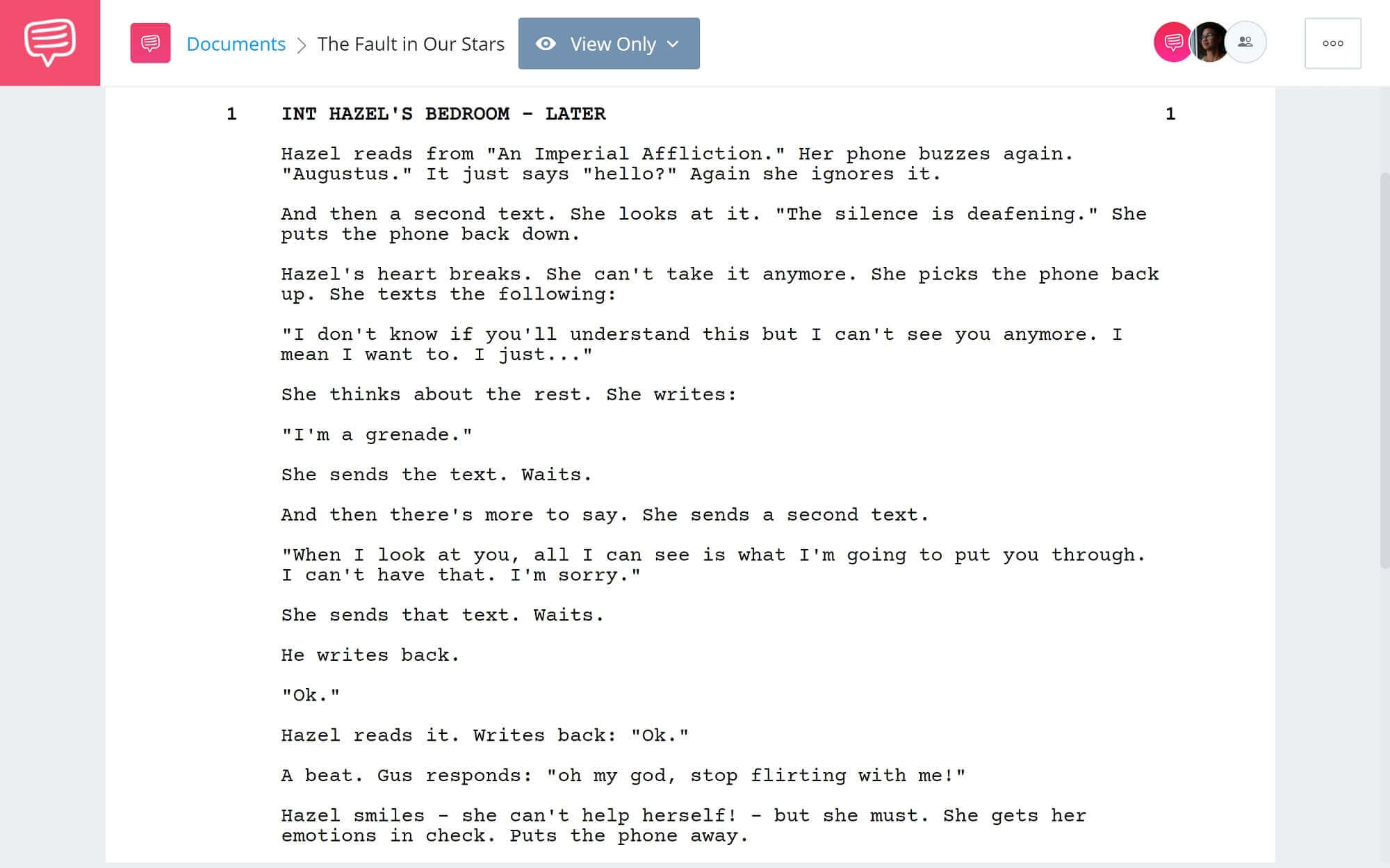With an increasing presence of technology in film, it is important to understand how to write text messages in a screenplay. Text messaging has become not only commonplace, but necessary in day to day communication for most people. It is only appropriate that this form of communication comes up in the lives of a story’s characters. Let’s take a look at how screenwriters write a text message in screenplay format and understand a few techniques that will help you become an expert at screenwriting text messages.
Watch: Anatomy of a Screenplay — Ultimate Guide
How to Write Text Messages in Screenplay
Two rules of screenplay formatting
There is not one single method to write text messages in a screenplay. However, every screenwriter should always follow two simple rules to screenplay formatting in general.
- Be clear
- Be consistent
These rules apply across all movie genres, whether you're formatting a montage, or deciding how to write sluglines. As long as you abide by these two rules, you're all set.
How can you tell if you are being clear? One trick is to read the scene out loud. If there seems to be any confusion or lack of clarity when you reach the section in which text messages are inserted, you should reassess your format.
Once you choose a format, be consistent in how you write a text message in screenplay format for the rest of your script.
The great thing about using screenwriting software like StudioBinder is that all of the formatting is built-in.
StudioBinder Screenwriting Software • Subscribe on YouTube
Now that we have the ground rules established, let's look at some examples of how to write text messages in a screenplay. We'll start with some quick, original screenplay examples and then we'll look at some feature films and how those writers pull off a text message in screenplay format.
Related Posts
How to Write Text Message Using Descriptions
Formatting a single text
The first method screenwriters use is stating the text message within a script’s action description. This is useful when only one text is read or shown rather than a conversation unfolding. We created a few examples of how to show a text message in a screenplay.
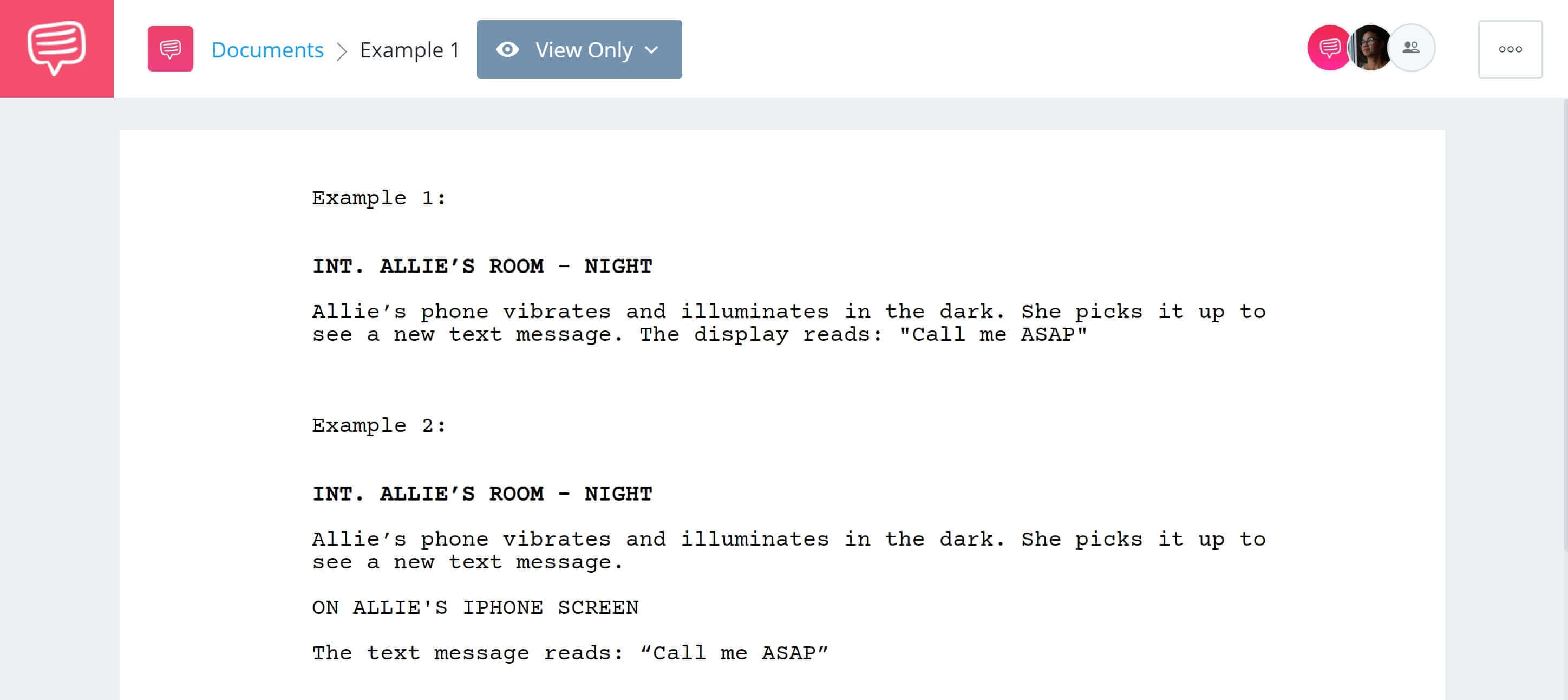
Two versions of texting in the description
You'll notice that the first options keeps the entire text within the description, while the second option uses a sub-heading first. Version 1 works from a clarity standpoint and Version 2 might work better in a shooting script, where shots and camera direction are typically found.
Again, there are no "rules" to follow, per se, but remember that every line counts. If your script has a lot of texting, and you use Version 2 every time, you'll add extra and unnecessary pages to the total page count.
Writing Texts Using Dialogue Blocks
Formatting texts as dialogue
How do you show texting in a screenplay that involves a two person dialogue? This can also be done a few ways.
Standard dialogue blocks can be used as long as you properly clarify in each block that the dialogue is still through text messaging. It also helps to italicize any text messages to differentiate it from normal dialogue.

Texting as dialogue
Another popular way filmmakers are utilizing text messaging is through on-screen text graphics as the characters are texting. How do you show texting in a screenplay that utilizes these animations? Simply clarifying that “chyrons” appear on screen will clarify.

Visual texting on-screen
Again, there is not one way to format a text message into a screenplay. These are only a few examples of how to be clear with texting in a scene. Find what format works for you and your screenplay best and stick to it.
Related Posts
Examples of How to Write Text Message in Screenplay
How Hollywood scripts format texts
Screenwriters often write text messages into their screenplay based on how the page might read. Although the following techniques may differ in format, they are all great examples of how to show text messages in a screenplay with clarity and direction.
Screenwriting text messages can often include a layer of subtext within the text messages. Including how characters react to texts will keep your texting scenes clear and interesting. We imported some feature scripts into StudioBinder's scriptwriting software so we can take a look at how the pros format a text message in a screenplay.
Here's a great example from a scene in The Spectacular Now — notice how the text messages and reactions are blended together to give depth to the conversation.
The Spectacular Now Example • Read Full Scene
Other screenwriters show how to write a text message in a screenplay format based on how the text might appear visually. This can be important when a text message is typed out on screen. Here's an example from one of the best Edgar Wright movies Scott Pilgrim vs. The World, a film which raised the bar on how to use on-screen graphics.
Scott Pilgrim vs The World Example • Read Full Scene
Some screenwriters demonstrate how to write text in a screenplay using only descriptions. This can be helpful if an internal or external conflict develops as the scene goes on. Here's our final example on how to write text messages in a screenplay.
The scene is from The Fault in Our Stars and it also uses the action/description lines to include the texts. This scene also highlights the intimacy that can be written into moments where characters communicate without actually talking.
The Fault in Our Stars Example • Read Full Scene
Analyzing some examples of how to write text in a screenplay can help you incorporate them into your story effectively. In this video, Every Frame a Painting takes a look at effective and not so effective ways movies have incorporated text messages in the past.
Every Frame a Painting: A Brief Look at Texting and the Internet in Film
Text messages in film can be an effective and unique way to communicate information to an audience if done correctly. No matter what you decide on how to write text messages in a screenplay, always remember to be clear and consistent.
Related Posts
UP NEXT
How to write a montage in a script
Now that you understand how to write text messages in a screenplay, you may want to learn about other formatting techniques that may come up as you write. A very common and useful filmmaking technique is the montage. Understanding how to format a montage is essential for any screenwriter and can be key to a great screenplay.
